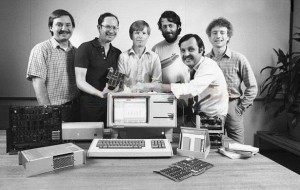Computers
Project Chess Gets Approval
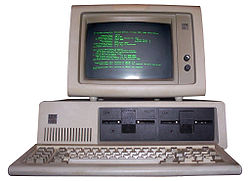
The Project Chess team at IBM shows a prototype microcomputer to their corporate management. Management gives approval for the team to build an operational computer within a one year deadline to compete in the rapidly emerging personal computer market. One year and 4 days later, the IBM PC is introduced to the world and the rest is history.
IBM Presents Harvard the Mark I
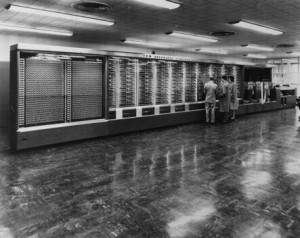
IBM presents Harvard University their Automatic Sequence Controlled Calculator (ASCC), an electro-mechanical computer devised by Howard H. Aiken and built by IBM. Harvard renamed the ASCC the Harvard Mark I. The Mark I was not significant for technological advances, as the fully-electronic ENIAC was being constructed when the Mark I was being put into service. However, the Mark I was the first large-scale digital calculator ever built and served to spark the desire for more and better computing machines.
Radio Shack Introduces TRS-80
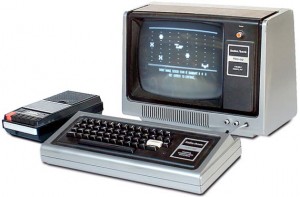
Radio Shack introduces their first computer, the TRS-80. With the support of 3500 Radio Shack stores plus a relatively low cost, the TRS-80 helped drive the acceptance of the personal computer in the home. Originally forecasting sales of just 3,000 to 5,000 per year, the TRS-80 sold over 10,000 units in the first month-and-a-half of sales and 200,000 over the lifetime of the product.
Apple Lisa is Born
July 30, 1979
Apple begins work on the Lisa, which would become the world’s first commercial computer with a graphical user interface. Originally intended to sell for $2,000 and ship in 1981, the Lisa is delayed until 1983 and sells for $10,000. Utilizing technology that is ahead of its time, the high cost, relative lack of software, and some hardware reliability issues ultimately sink the success of the Lisa. However, much of the technology introduced by the Lisa influenced the development of the Macintosh as well as other future computer and operating system designs.
IBM’s First Desktop Computer
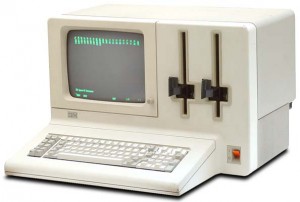
IBM introduces their System/23 Datamaster desktop computer, only two weeks before they introduce their IBM PC. Geared towards small business for use as a word processor and data processor, the computer was designed to be set up by end-users without the need of a computer specialist. While now a footnote in history, the importance of the Datamaster is that many of the team members that developed it were re-assigned to the secret IBM PC project. Much of the knowledge they acquired working on the Datamaster went into developing the IBM PC as quickly as possible. For example, the choice of the Intel 8088 processor in the IBM PC was based on the team’s familiarity with the similar Intel 8085 processor used in the Datamaster.
Commodore Amiga Introduced
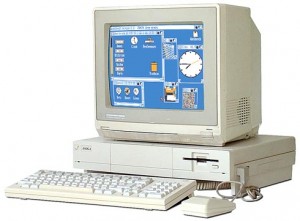
Commodore introduces its Amiga personal computer, also known as the Amiga 1000 or A1000. Featuring a multitasking, windowed operating system, color graphics, and stereo sound among other features ahead of its time, the Amiga developed a loyal user following that remained strong even as the PC market became increasingly consolidated between the dominant IBM-compatible PCs and Apple Macintosh computers.
In 1994, Byte Magazine would write, “The Amiga was so far ahead of its time that almost nobody — including Commodore’s marketing department — could fully articulate what it was all about. Today, it’s obvious the Amiga was the first multimedia computer, but in those days it was derided as a game machine because few people grasped the importance of advanced graphics, sound, and video.”
The Unholy Alliance is Born

Representatives from an IBM facility in Boca Raton, Florida, where a small group of engineers were secretly developing the IBM PC, meet with Bill Gates and Steve Ballmer of Microsoft to discuss licensing software and an operating system for the still-developing PC. Not having an operating system to offer IBM, Microsoft will eventually buy the rights to QDOS/86-DOS from Seattle Computing Products, which they in-turn license to IBM as PC-DOS, and later license to PC clone makers as MS-DOS. This alliance between IBM and Microsoft forms one of the most dominant platforms in the history of computing, which goes on to crush nearly all other PC platforms in the 80’s and 90’s. Ironically this platform nearly crushes IBM itself as they lost control of the platform to PC clone makers and Microsoft.
Apple Introduces iBook Laptop

Apple introduces the iBook laptop, the first mainstream computer designed and sold with built-in wireless networking.
Intel Founded
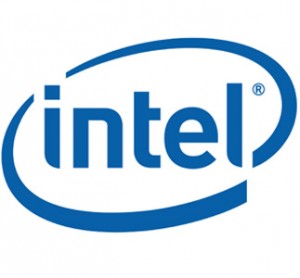
Robert Noyce, Andy Grove, and Gordon Moore incorporate Intel in Santa Clara, California to build microprocessors. Their first processor, the 4004, was released in 1971 for use in calculators. IBM’s choice of Intel’s 8088 processor for use in the IBM PC led to Intel’s emergence as the premier manufacturer of processors still to this day.
Control Data Corporation Founded

Control Data Corporation, an early pioneer in the field of supercomputers, is incorporated. CDC’s most notable employee was Seymour Cray, who during the 1960’s developed for CDC the fastest computers in the world at the time. However, in 1972 Seymour Cray left CDC to form his own company, Cray Research, which then took the title of creating the world’s fastest computers.

